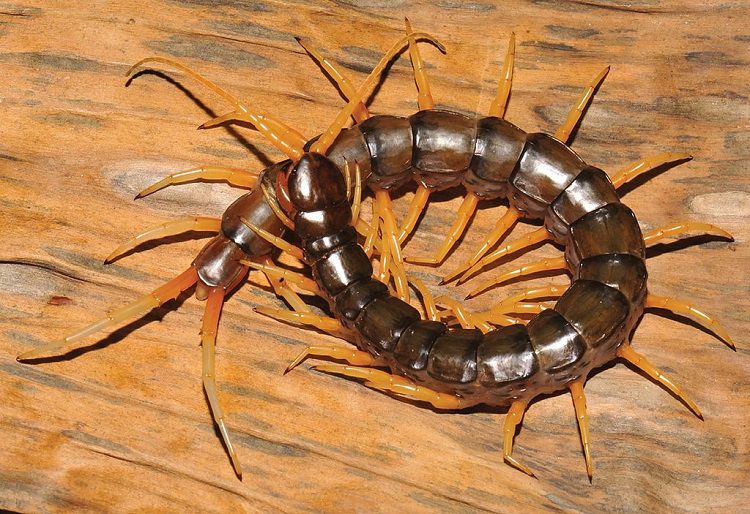Table of Contents
We are often asked if centipedes can be kept as pets. The answer we give is always a resounding yes. However, if you do consider getting one of these wonderful and interesting creatures as a pet, there are a number of things you need to be aware of. The first being that centipedes are unlike many other myriapod and insect-type pets in that they can, and most often will, bite when handled.
are unlike many other myriapod and insect-type pets in that they can, and most often will, bite when handled.
These are quick, aggressive creatures that should only be handled if and when absolutely necessary. They do not like to be handled and can be dangerous, especially for those with little experience of looking after them.
With that in mind, housing for a centipede is an important consideration. Since they are venomous, centipedes in captivity require a secure enclosure. But provided they are kept safe and secure a centipede makes for an interesting pet.
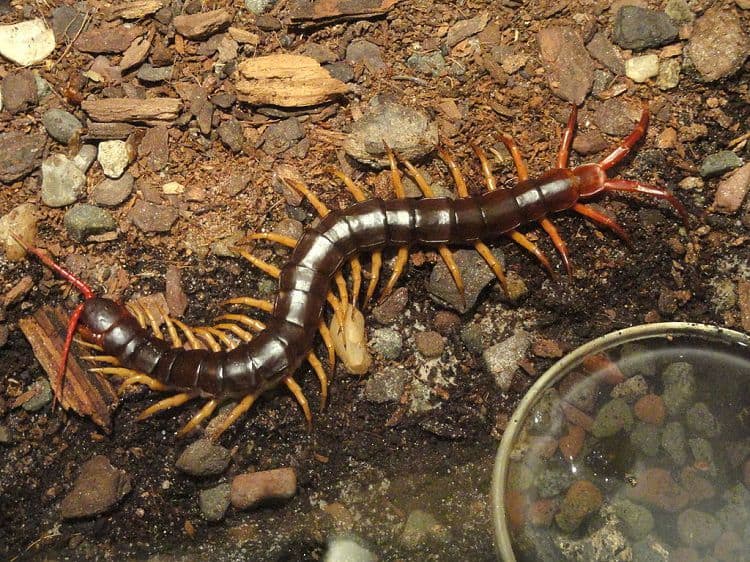
Chinese Red-Headed Centipede 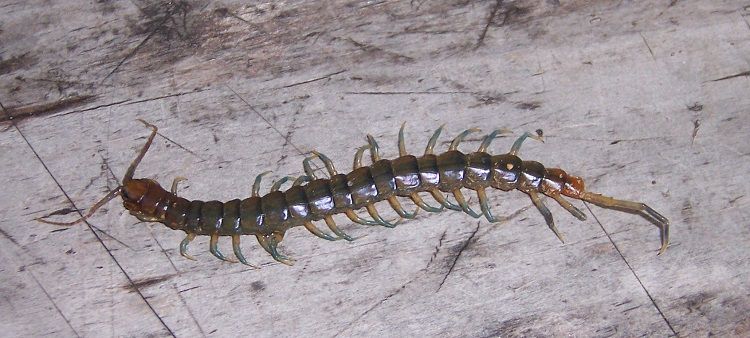
Red-Headed Centipede 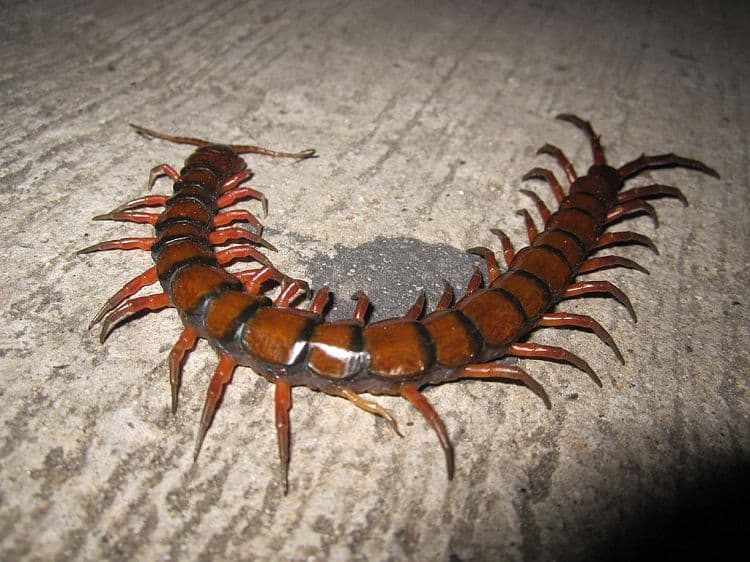
Amazonian Giant Centipede
Creating the Perfect Environment for Your Centipede
The right housing is vital for a centipede. You can purchase a large glass or plastic aquarium which will enable you to see your pet as it scurries about and burrows. A five- to ten-gallon aquarium is ideal. If you’re interested, you can find a great selection on Amazon – click here .
.
Ensure that the tank has a lid that can be secured because centipedes are the masters of escape. If you are thinking about making an enclosure, you can purchase any type of large, transparent plastic tub with a lockable lid. However, if you do this, be sure to perforate the lid with small holes to allow the creature to breathe.
It is important to place a substrate into the centipede enclosure in which it can burrow. There are a number of different options available to you including compost, potting soil, or a mixture of both. Some people prefer to use substrate made from moss, bark, or coconut husk. As a general rule, the depth of the substrate should at least match the length of the centipede.
Places to Climb and Hide
Centipedes like to climb and hide, so providing them with things that let them do this is important. Place some rocks, tree bark, or old wood into the enclosure onto which the centipede can climb. For them to hide, you can add hollowed-out logs which can be purchased at a local pet store or online (see here at Amazon ). Some people like to bury part of the log in the substrate, which allows for both hiding and burrowing.
). Some people like to bury part of the log in the substrate, which allows for both hiding and burrowing.
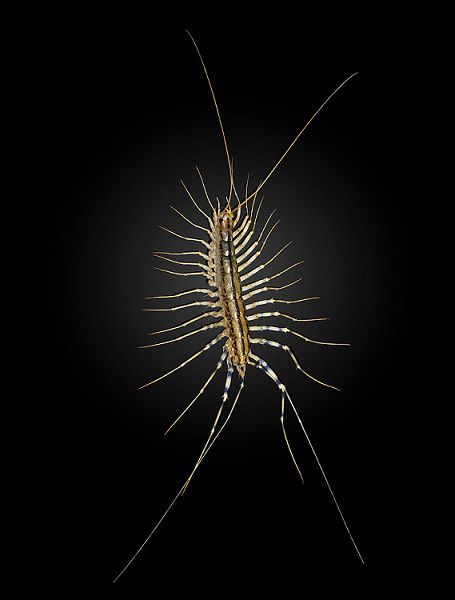
House Centipede 
Common Desert Centipede 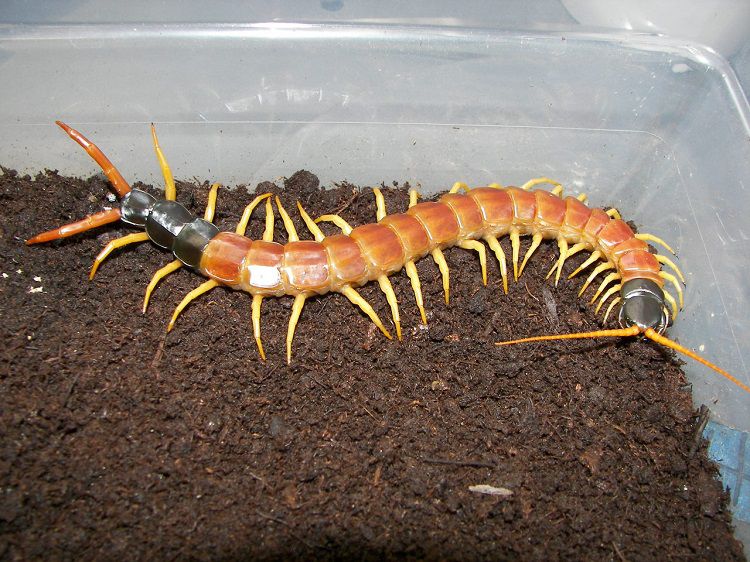
Giant Desert Centipede
Temperature and Lighting
Centipedes are nocturnal creatures and do not like bright lights. Be sure to place the tank in a dimly lit part of the house and definitely out of direct sunlight. If you want to observe your centipedes at night, you can purchase a blue or red bulb to provide an artificial light that is not too bright (click here for a selection on Amazon).
for a selection on Amazon).
When it comes to temperature, the tank needs to be warm and humid. Make sure the tank is always between 60oF and 78oF while humidity levels need to be between 75 and 80 percent. To help keep the enclosure humid, regularly spray the walls and the substrate, but do keep an eye on the substrate to avoid mold and fungus growth.
Photo Credits:
- Featured Image (Waterfall Centipede): This file is licensed under the Creative Commons
 Attribution 3.0 Unported
Attribution 3.0 Unported license.
license. - House Centipede: This file is licensed under the Creative Commons
 Attribution-Share Alike 4.0 International
Attribution-Share Alike 4.0 International license.
license. - Amazonian Giant Centipede: Katka Nemčoková
 – This file is licensed under the Creative Commons
– This file is licensed under the Creative Commons Attribution-Share Alike 3.0 Unported
Attribution-Share Alike 3.0 Unported license.
license. - Giant Desert Centipede: John
 – This file is licensed under the Creative Commons
– This file is licensed under the Creative Commons Attribution 2.0 Generic
Attribution 2.0 Generic license.
license. - Red-Headed Centipede: B. Navez – This file is licensed under the Creative Commons
 Attribution-Share Alike 3.0 Unported
Attribution-Share Alike 3.0 Unported license.
license. - Common Desert Centipede: Matt Reinbold
 – This file is licensed under the Creative Commons
– This file is licensed under the Creative Commons Attribution 2.0 Generic
Attribution 2.0 Generic license.
license. - Chinese Red-Headed Centipede: Daderot
 – This file is made available under the Creative Commons
– This file is made available under the Creative Commons CC0 1.0 Universal Public Domain Dedication
CC0 1.0 Universal Public Domain Dedication .
.

